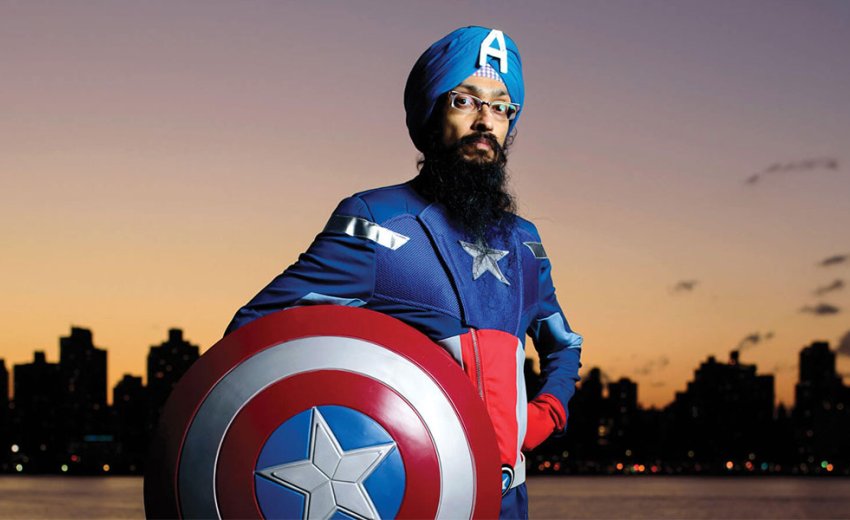Cartoonist Vishavjit Singh has developed a one-of-a-kind style for Sikh Captain America. In contrast to how the literary hero is typically portrayed, he wears a turban, has a long beard, wears spectacles, and has brown skin. Actor Chris Evans, thanks to the success of the Marvel Cinematic Universe, may be the first person you picture when you think of Captain America. A chiseled chin, sculpted shoulders, and a towering stature are the classic features of the Super Soldier in the minds of comic book readers.
People's reactions vary when they witness Singh dressed up as Captain America, holding a shield with a star in its middle in his palm. While some express their dissatisfaction, many others seek him out for a photo session or to strike up a conversation. When asked how he feels, Singh says, “I want that image, that powerful image of me — skinny, glasses, turban, beard — going in and just kind of confusing people,”
He further adds, “I’m trying to confuse people to a certain extent, so they will start asking questions, so they will start exploring, so they’ll start asking why.”
These queries, he remarked, can pave the way to development and education. For the past six years, Singh has been giving speeches and giving tours as "Sikh Captain America." At school visits, workshops, and comic conventions, he presents a jarring image of the most patriotic superhero. He has helped dismantle stereotypes, increase knowledge about the Sikh faith, and challenged assumptions of who is American.
The American Superhero Project
Together with Seattle photographer Nate Gowdy, Christie Skoorsmith, and Gregory L. Evans, Vishvajit Singh is working on a photo and storytelling project titled "The American Superhero." They are encouraging anyone else who wants to play the role of Captain America to do so. In addition to taking professional photographs, Gowdy also inquires as to the significance of being an American to them and what they feel to be their greatest strength.
Gowdy claimed that dressing up was a "funny, amusing method" to get people to relax. However, when they finally sat down and heard the stories, they were awestruck to know about the experiences and perceptions that people have of being an American.
Social worker and drag queen Aleksa Manila is one of the participants. Manila is seen in the painting adorned with a crown, chandelier earrings, a royal blue sequined gown, and a huge shield. Manila says that it helps people to be inspired, to be encouraged, to dive deep, and to realize the beauty that resides inside and out via the medium of drag.
High school music instructor, musician, and quadriplegic, Jeremy Best also participated in the project by posing for photographs. Best described his superpower as pioneering technology so others with a similar physical condition can still make music in the future. Mary Elisabeth Hancock also participated, in addition to the three members of the Vasilez family. She has lived a full life, serving as a medic during World War II when she reached the age of 99.
The project comes at a time when attempts to promote diversity and inclusion are taking up more mainstream space. The group is focused on narrating human tales to demonstrate that once we get past the surface, there is much to unite us. It's an extension of Singh's work over the last few years.
How it projects Sikh identity
‘The American Superhero’ is a passion project for Singh. He is fighting back against the racism he continues to face. He is still being referred to as Osama Bin Laden and encouraged to return home. Singh said he hasn't noticed a major uptick in venom aimed at him now that he's 45. Rather, he emphasizes what he calls a silver lining: increased empathy from other targeted communities.
Through the famous character of Captain America, Singh is giving voice and life to the subcultures in America. The Sikh Captain America is a way of representing the Sikh identity while creating awareness about the religion.
“We all can be Captain America. We all have superheroic seeds in us and we express them differently in real life,” said Singh. “I want people to see themselves in these stories.”
*Based on an article by Lisa Edge, published on 31st July 2019, in Real Change News

